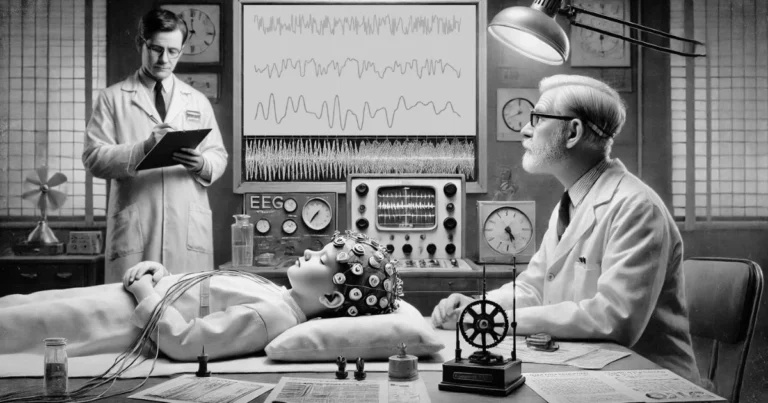The double-edged sword of communication: between understanding and manipulation
Communication is meant to be a bridge between humans, the most direct path to understanding, listening, and loving one another. Yet, rather than always bringing people together, words can quickly become a trap, a maze where meanings contradict, intentions blur, and voices of understanding are drowned out by an endless stream of speech that obscures rather than conveys what truly matters.
Researchers, particularly those from the Palo Alto School, have demonstrated that certain communication patterns do more than disrupt human interactions, they can contribute to the development of deep psychological distress. Today, contemporary authors like Jonathan R. Peretz and researchers from the PGSP-Stanford Psy.D. Consortium are expanding on these ideas, exploring how communication dynamics shape our minds, sometimes to the point of fracture.
This research raises crucial questions: What happens when the messages we receive are inconsistent, ambiguous, or outright toxic? How do we react when we are trapped in impossible interactions? And what tools do we have to navigate these linguistic dead ends that shape our worldview and self-perception?
The double bind: the psychological toll of mixed signals
Imagine a child who is repeatedly told, “Be spontaneous!” but every time they take initiative, they are immediately reprimanded: “Not like that!” This paradox creates an unsolvable dilemma, if the child obeys the command to be spontaneous, they paradoxically comply with an instruction, negating the very spontaneity they are asked to express. If they refuse to obey, they are disobedient either way. Trapped between two contradictory messages, they can neither escape nor resolve the puzzle.
This type of paradoxical injunction was described by renowned anthropologist and psychologist Gregory Bateson under the term double bind.
One of the most striking examples of the double bind in recent research involves mother-child interactions. A mother might hug her son while maintaining a tense, distant facial expression. If the child expresses discomfort, she might respond by blaming him: “You don’t like your mother’s hugs?” The child then receives two opposing messages, one nonverbal (coldness, distance), the other verbal (expected affection). This paradoxical communication makes any correct response impossible and, over time, leads to profound confusion in understanding relationships and the world.
How communication patterns follow us into adulthood
Contemporary research, notably by Jonathan R. Peretz, demonstrates that the double bind extends beyond parent-child relationships. This toxic pattern repeats itself in romantic relationships, workplaces, and even on a societal scale.
Consider an employee who is told, “Be autonomous and innovative!” but whenever they propose an idea, they are reprimanded for not following procedures. Or a teenager who hears mixed messages about self-expression: “Be yourself!”, but only within socially acceptable limits.
The long-term effects of the double bind are well-documented in psychopathology. Individuals constantly subjected to these tensions develop hypervigilance, an inability to trust messages they receive, and, in some cases, anxiety or depression. In extreme cases, particularly when these contradictory injunctions are passed down through generations, some researchers suggest they may contribute to psychotic symptoms, blurring the line between reality and illusion.
What makes the double bind particularly insidious is that it perpetuates itself. A child raised in an environment saturated with verbal and emotional paradoxes internalizes these patterns and unconsciously replicates them in their personal and professional relationships. They may become an adult who oscillates between ambiguous messages, both warm and distant, encouraging yet critical.
When words become a trap, they do not merely obscure understanding; they can also turn into a subtle weapon. Trapped in a web of contradictions, the individual no longer knows how to respond without running into a dead end. And sometimes, beyond confusion, words take on a destructive force, leaving invisible wounds that cut deeper than one might imagine.
When words cut deeper than blades
Words do more than convey ideas, they shape our emotions, mold our self-perception, and sometimes leave scars deeper than any physical injury. Some messages are not just paradoxical; they are insidiously destructive, weaving a web of confusion and suffering around those who receive them.
Consider these common phrases:
- “I want the best for you, but you never do anything right.”
- “If you were stronger, you wouldn’t be so sensitive to what I say.”
These statements carry a toxic ambivalence. Beneath the guise of concern, they conceal criticism that leaves no escape. The recipient is left questioning: Should they change, or should they reject the message? Gradually, this verbal violence seeps into their mind, eroding self-esteem and internalizing pain.
Paul Watzlawick, a prominent member of the Palo Alto School, highlighted how individuals exposed to humiliating or contradictory injunctions may ultimately turn this violence against themselves. Among adolescents, this dynamic is particularly dangerous. Faced with relentless pressure and harmful words, some develop self-destructive behaviors, eating disorders, self-harm, social withdrawal, all signals of an unspoken distress.
Neuroscience confirms the profound impact of such experiences. A study by Anne-Laure van Harmelen and her team (2014) revealed that severe emotional maltreatment in childhood alters the functioning of the orbitofrontal cortex, a key region involved in emotion regulation and decision-making. These neural changes increase vulnerability to anxiety, depression, and dissociative disorders in adulthood.
Moreover, research on traumatic stress has identified structural alterations in the amygdala, hippocampus, and prefrontal cortex, areas essential for memory and stress management. These neurological disturbances contribute to emotional dysregulation and a chronic state of anxiety.
Far from fading with time, these invisible wounds shape long-term relationships with oneself and others. They become ingrained in the brain’s biology, making healing complex without proper intervention.
A world of hidden meanings: when suspicion becomes a reflex
Communication is meant to be a clear and reassuring exchange, a way to understand and be understood. Yet, when messages are ambiguous, loaded with subtext, or tinged with inexplicable coldness, they become a source of anxiety. Doubt sets in: A compliment seems sarcastic, a glance feels intrusive, a silence becomes a reproach. Every interaction turns into a decoding exercise, a search for hidden motives, an anticipation of unseen attacks. This constant state of alertness, where everything is analyzed through the lens of danger, is known as hypervigilance.
Neuroscientists have shown that prolonged exposure to ambiguous and contradictory signals alters the amygdala, the brain region responsible for processing emotions and detecting threats. An overactive amygdala, combined with prefrontal cortex dysfunction, impairs rational evaluation of situations. The result? A distorted perception of the world, one where everything feels potentially hostile.
Healing through language: The power of constructive communication
If communication can wound, it also holds remarkable healing power. Advances in psychology have highlighted several approaches to restoring healthier exchanges and mitigating their harmful effects.
- Family Systems Therapy: By identifying and modifying toxic patterns passed down through generations, it helps rebuild more balanced dialogues, allowing emotions to be expressed without fear or judgment.
- Nonviolent Communication (NVC): Developed by Marshall Rosenberg, this method teaches individuals to articulate feelings and needs constructively, avoiding blame and fostering empathetic listening.
- Psychoeducation: Understanding how language influences emotions and behaviors enables individuals to step back from harmful words and free themselves from their impact.
Neuroscientific research shows that positive interactions strengthen the prefrontal cortex, improving emotional regulation and reducing stress. Words are not neutral, they can trap us in suffering, but they can also unlock resilience and healing. Recognizing this is the first step toward change.
“Every act of communication is a self-fulfilling prophecy.”
Paul Watzlawick
Our words shape our relationships, influence our emotions, and sculpt our perception of reality. A careless remark can sow doubt, a harsh word can leave a lasting scar, but a sincere, compassionate exchange can also heal, rebuild, and liberate.
By understanding human communication, identifying its traps, and learning to express ourselves differently, we can break the cycles of misunderstanding and invisible wounds. If we choose clarity over ambiguity, listening over reacting, then perhaps, one day, we will turn these invisible traps into bridges toward a deeper understanding of ourselves and others.
References :
Bateson, G. (1972). Steps to an Ecology of Mind. University of Chicago Press.
Bremner, J. D. (2006). Traumatic stress: effects on the brain. Dialogues in Clinical Neuroscience, 8(4), 445–461.
Gueguen, C. (2019, 1 juillet). Violences éducatives ordinaires : leurs conséquences sur le cerveau de l’enfant. Les Pros de la Petite Enfance.
Peretz, J. R. (2020). Trauma and Communication in Family Systems. Palo Alto University Press.
Rosenberg, M. B. (1999). Nonviolent Communication: A Language of Life. PuddleDancer Press.
Touboul, A. (2019). Literature and Psychological Disorders: An Exploration of the Unspoken. Psyché Editions.
Watzlawick, P., Beavin, J. H., & Jackson, D. D. (1967). Pragmatics of Human Communication: A Study of Interactional Patterns, Pathologies, and Paradoxes. W. W. Norton & Company.

Ahmed El Bounjaimi
Copywriter-Content Designer
Master’s in Organizational Communication, Hassan II University
Bachelor’s in Philosophy of Communication and Public Spheres, Hassan II University







